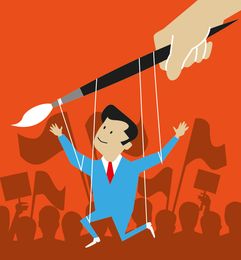The past doesn’t always remain in the past. Sometimes, it emerges in the present, reminding us about the universality and repetitiveness of the human experience. Berlin’s George Grosz Museum, a tiny gem, is a startling reminder that modern political and social ills are not modern. Grosz lived through World Wars I and II, shining a torch into the heart of darkness in high-ranking men and women—who were complicit in the collapse of the world as they knew it.
Satirical and subversive, playful and profound, Grosz’s cartoons and drawings represent art as political protest, a resistance to “blood-stained nationalism”. He digs deeper, offering insightful, stinging analysis. Hyperinflation threw Germany into chaos. But with surgical precision, Grosz depicts a catastrophic cause for the fall of the Weimar Republic and the rise of Hitler: grotesque inequality. His cartoons are a testament that neither war nor inflation affect the power elite—the monarchy, military, church and bourgeoisie.
Through clean, sharp strokes that could be drawn with a dagger, Grosz rips apart social veneers to show the streets of corrupt, carnal Berlin. The times are promiscuous. Lust is in the air. The affluent crave for power, money and sex. The testosterone-driven generals, the voracious fat cats of capitalism, the plundering black marketeers, the complacent, covetous petite bourgeoise profiteering from war and human misery, the macho men and voluptuous women eyeing each other rapaciously—all are utterly indifferent to public desperation. Such inequality dooms, destabilises and destroys societies… again and again. Using data, today’s economists like Thomas Piketty and Joseph Stiglitz warn about the malevolence of inequality. Artists use their imagination to offer lateral perspectives on history’s unconscionable predator-prey human dynamic.
Sometimes, the past is the present. Another gem of a museum—Urban Nation—offers a glimpse into five-feet-high cardboard model of a bombed apartment building made by two Iranian artist brothers “Icy and Sot” who live as refugees in Brooklyn, New York. Shattered rooms are smothered in thick gray concrete dust. The entrails of wiring, plumbing and beams pierce the eye. Jagged shards of furniture reach out for their dead owners, weaving imaginings of the once thrumming universe of these destroyed families—flattened pianos, overturned tables, legless chairs. The ghostliness of broken belongings that don’t belong, the heartbreak of tender detail, the senselessness of destruction are overwhelming. Unlike TV footage, these scenes are still—precisely why they are so moving. Rooms become urns, full of ash, drained of colour.
But the rear of the building, unscathed in the bombing, bursts with colour and hope. Though uninhabited, the interiors are bright with colourful wallpaper, comfortable sofas, even a beautiful white abandoned piano, yearning for its owner’s return. The building is an image of the 2011 war in Aleppo, Syria. But it symbolises Ukraine yesterday, Gaza today. History repeats itself, elites wage war, masses suffer.
Several years ago, the Kochi Biennale highlighted political art—biting, brutal, brilliant depictions of the social, economic and environmental evils that characterise our times. Then the self-absorbed contemporary western art had seemed obsessed with form for forms’ sake—dramatic, but not particularly relevant to ordinary people, just like haute couture that wins critical acclaim but is unwearable. There has been a sea change and western art pushes ahead with gritty current issues. Urban Nation showcases artists’ quirky, accessible, forceful take on our contemporary struggles—climate change, war, globalisation, polarisation, deep fakes, social media that divides and unites, silences and shouts. Artists despair: “Everybody is talking, nobody is listening.” But then, this is our Tower of Babel.
Pratap is an author and journalist.


